Introduction
In the fascinating world of economics, understanding how consumers make choices is a key area of study. One powerful tool that helps us analyze consumer decision-making is the concept of indifference curves and budget lines. In this blog post, we will delve into these concepts and explore their significance in determining consumer behavior.
Indifference Curves and Marginal Rate of Substitution
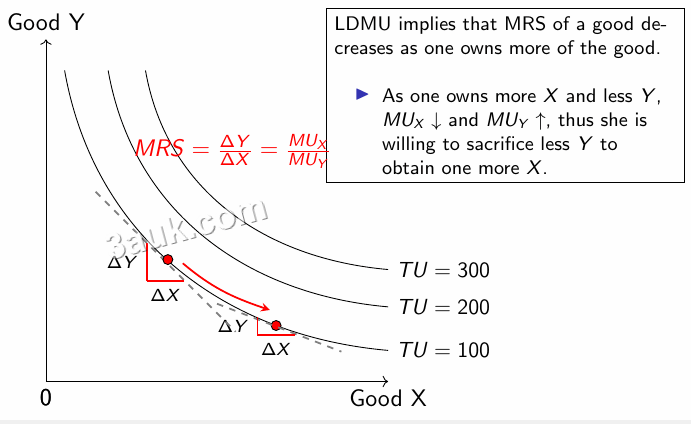
Indifference curves represent a graphical depiction of a consumer’s preferences. They illustrate various combinations of two goods that provide the same level of satisfaction or utility to the consumer.
- The slope of an indifference curve is known as the marginal rate of substitution (MRS), which indicates the rate at which a consumer is willing to give up one good in exchange for another while keeping utility constant.
- Properties of indifference curves
- Downward Sloping: Indifference curves are downward sloping, which means that as we move along the curve, the consumer remains indifferent between different combinations of goods. The negative slope indicates the trade-off between the two goods: as the quantity of one good increases, the quantity of the other good must decrease to maintain the same level of satisfaction.
- Convex Shape: Indifference curves exhibit a convex shape. This convexity reflects the concept of diminishing marginal rate of substitution (MRS). As a consumer consumes more of one good, the MRS decreases, indicating that the consumer is willing to give up fewer units of the other good to obtain an additional unit of the first good.
- Non-Intersecting: Indifference curves do not intersect with each other. If two curves were to intersect, it would imply that the consumer is simultaneously indifferent between different bundles of goods, which violates the concept of transitivity in consumer preferences.
- Higher Indifference Curves Represent Greater Satisfaction: Indifference curves that are located further away from the origin represent higher levels of satisfaction or utility for the consumer. This is because the consumer can reach a higher level of utility by consuming more of both goods.
Budget Lines
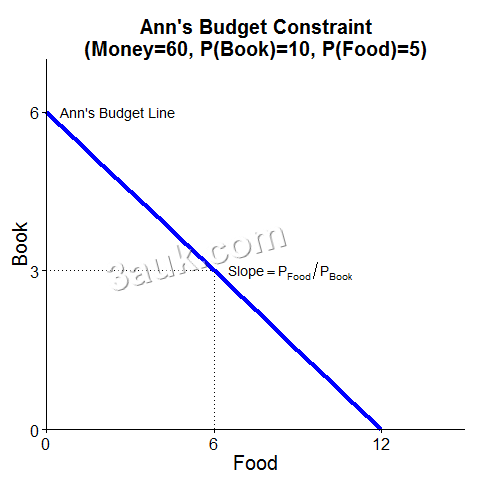
A budget line represents the different combinations of goods that a consumer can afford given their income and the prices of the goods. It showcases the trade-off between the quantities of two goods that a consumer can purchase, given a specific income level and prices.
Causes of a Shift in the Budget Line
The budget line can shift due to changes in income or changes in the prices of goods.
- An increase in income will cause the budget line to shift outward, expanding the consumer’s purchasing power. Conversely, a decrease in income will lead to an inward shift of the budget line, limiting the consumer’s purchasing options.

- Changes in the prices of goods will cause the budget line to rotate, reflecting alterations in the relative affordability of different goods.
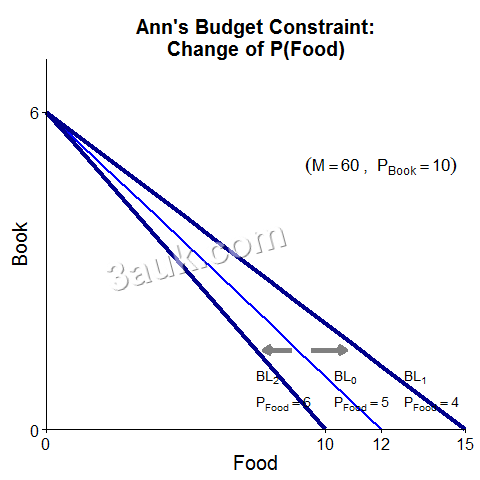
Consumer Equilibrium
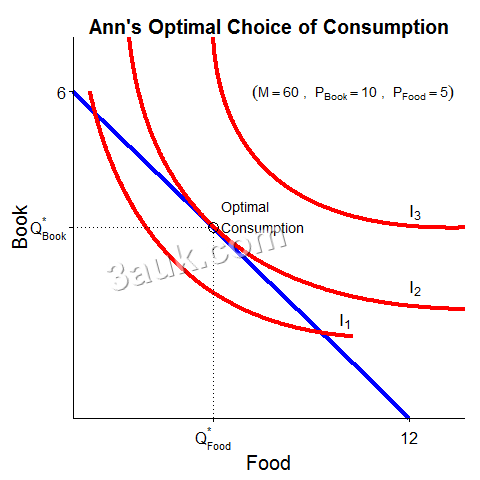
Consumer equilibrium occurs when a consumer maximizes their utility or satisfaction given their budget constraint. It is achieved when the consumer’s indifference curve is tangent to the budget line. At this point, the marginal rate of substitution is equal to the ratio of the prices of the two goods.
Income, Substitution, and Price Effects
When the price of a good changes, it has two primary effects on consumer choices: income effect and substitution effect.
- The income effect occurs when a change in price alters the consumer’s real income, impacting their purchasing power.
- The substitution effect occurs when the relative price of one good changes, causing consumers to substitute the relatively cheaper good for the relatively more expensive one.
These effects vary for normal goods, inferior goods, and Giffen goods.
Normal Goods
- Normal goods are those for which demand increases as real income increases.
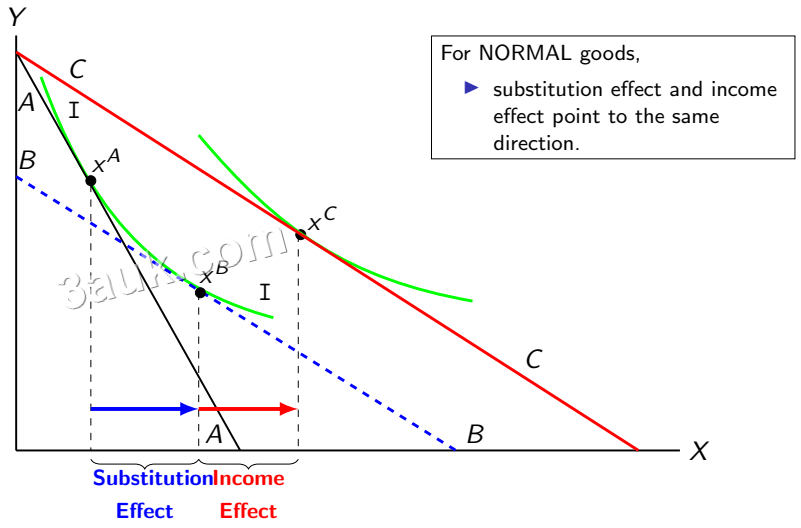
-
- For normal goods, both the income effect and the substitution effect work together, reinforcing each other.
- Income Effect: When the price of a normal good decreases, consumers experience an increase in their purchasing power. This increase in real income leads to a higher quantity demanded of the normal good, assuming all other factors remain constant.
- Substitution Effect: A decrease in the price of a normal good relative to other goods makes it relatively more attractive. Consumers tend to substitute the relatively cheaper good for other goods in their consumption bundle. This substitution effect also contributes to an increase in the quantity demanded.
- Overall, the combined impact of the income effect and the substitution effect for normal goods results in an increase in quantity demanded as the price decreases.
Inferior Goods
- Inferior goods are goods for which demand decreases as real income increases.
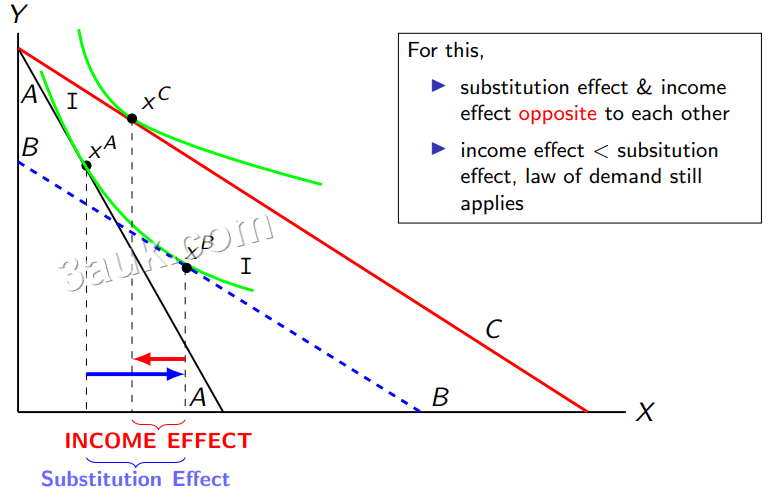
-
- The income effect and substitution effect for inferior goods work in opposite directions.
- Income Effect: When the price of an inferior good decreases, consumers’ real income increases, assuming their overall expenditure remains the same. As a result, consumers may choose to shift their preferences towards higher-quality goods, leading to a decrease in the quantity demanded of the inferior good.
- Substitution Effect: The decrease in the price of an inferior good relative to other goods prompts consumers to substitute it with other, more desirable goods. This substitution effect contributes to a decrease in the quantity demanded.
- The opposing income and substitution effects for inferior goods often result in an increase in quantity demanded as the price decreases, thus the substitution effect is larger than the income effect.
Giffen Goods
- Giffen goods are a unique type of inferior goods that defy the conventional relationship between price and quantity demanded. They are goods for which demand decreases as their price decreases.
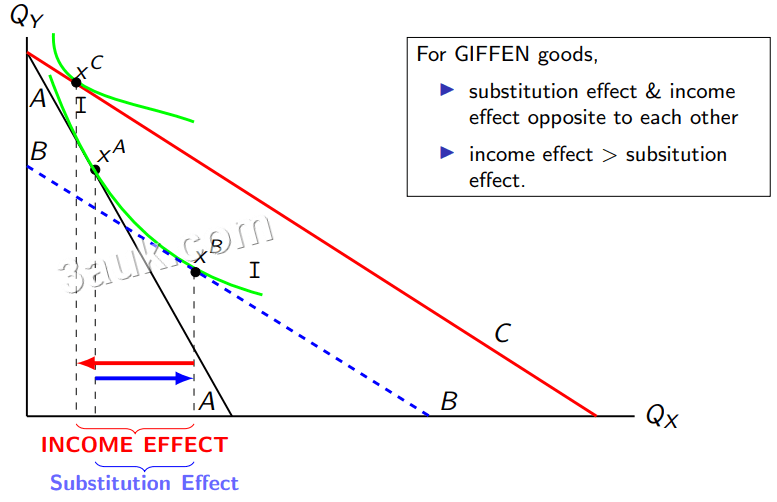
-
- Income Effect: When the price of a Giffen good decreases, consumers experience a increase in their real income. As a result, they may increase their consumption of other goods and allocate a smaller portion of their budget to the Giffen good, leading to a decrease in its quantity demanded.
- Substitution Effect: The substitution effect for Giffen goods is generally weak or even nonexistent. Despite the price decrease, the consumption of the Giffen good experiences a small increase due to its inferior quality.
- The dominant income effect in the case of Giffen goods causes an upward-sloping demand curve, where a decrease in price leads to a decrease in quantity demanded.
- It is important to note that Giffen goods are relatively rare and not commonly observed in real-world markets. Most goods conform to the standard downward-sloping demand curve.
Limitations of the Model of Indifference Curves
While the model of indifference curves is a powerful tool for analyzing consumer behavior, it has its limitations.
- The model assumes that consumers have complete and consistent preferences, which may not reflect the complexities of real-world decision-making.
- Additionally, it does not consider factors such as psychological influences, social factors, or the impact of advertising and marketing strategies.
Conclusion
Indifference curves and budget lines provide valuable insights into consumer decision-making, allowing economists to analyze how individuals allocate their limited resources among different goods. By understanding the concepts of consumer equilibrium and the income, substitution, and price effects, we gain a deeper understanding of how consumers respond to changes in their economic environment. However, it is important to recognize the limitations of the model, as consumer behavior is influenced by various factors beyond the scope of the indifference curve analysis.
Read more on Indifference Curve Theory:
